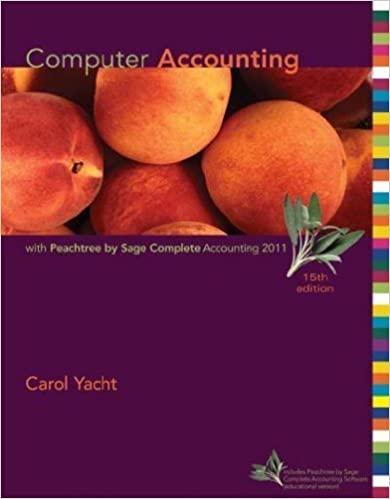Need (b). ONLY ANSWER if you know for sure! ty!

Karen's fashionable friends always bought the newest, trendiest jeans, and ended up with too many "old" pairs occupying precious closet space. Karen used her smarts and came up with a cool idea: encourage people to donate their jeans, or sell them to her for a nominal amount, and she would then rework them into snazzy jean jackets. Behold: Snazzy Inc. was born. But while Karen is blesse with creativity and sewing skills, she needs help organizing and summarizing her business costs. Some transactions that Karen engaged in this year, in no particular order, are as follows. 1. Purchased a new sewing machine for $2,600, with an estimated life of 5 years, used exclusively for her business. 2. Purchased thread, buttons, and patches for $300-all of which were used up this year. 3. Purchased new jeans for $990 and collected donated jeans from friends. 4. Paid friend $1,890 to help cut and sew the jackets together: 5. Finished making many jackets and sold all but one of them, and its total cost is $70. 6. Started the year with several completed jackets waiting to be sold; the combined cost of these was $430. 7. Paid $400 to ship three batches of jackets across the country as part of the sales transaction. 8. Paid $270 to run a series of ads in online channels. 9. Finished making all jackets she started except for one, which is still attached to the sewing machine, half-finished; it has an estimated cost so far of $40. 10. Began the year with no jackets in the partially completed stage. 11. Counted 40 pairs of jeans still waiting to be transformed at year-end; the cost of these is estimated at $120. 12. At the beginning of the year, had just 10 pairs of jeans sitting on the shelf untouched, with a combined cost of $30. For each of the items above, specify whether it describes a product cost or a period cost. If it represents beginning or ending inventory, specify the type of inventory. (Do not leave any answer field blank. Select "NA" if not applicable.) Your answer is incorrect. Create T-accounts for RM Inventory, WIP Inventory, FG Inventory, and COGS. Enter any appropriate beginning balances and record any amounts that would have been debited or credited to these accounts during the year. Lastly, determine ending balances for all four accounts










